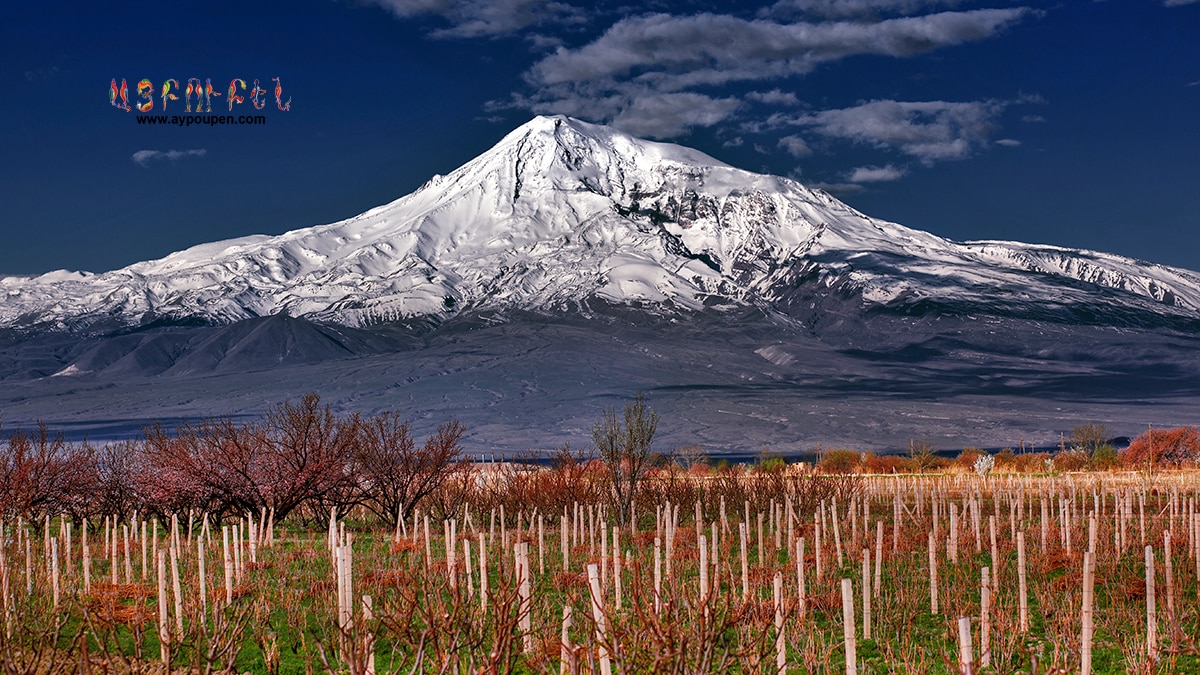Where is Armenia situated? Geolocation
Armenia is located in the South Caucasus region of Eurasia. In case you’re wondering whether Armenia is situated in Europe or Asia, consider both of your versions close. The country is situated on the Armenian highlands at the crossroads of Europe and Asia, specifically in Western Asia.
Armenia is a landlocked country sharing borders with Turkey to the west, Georgia to the north, the de facto independent Republic of Artsakh, Azerbaijan to the east, and Iran to the south.
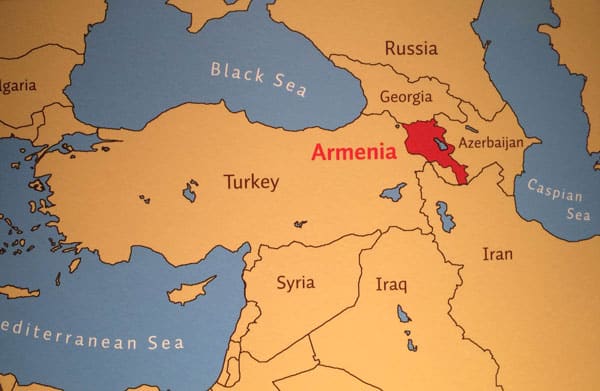
It’s an ancient country known for its 3,500-year-old history, rich culture, and mountainous landscapes of boundless beauty.
The country stretches 29,743 square kilometers (about the size of Belgium or Maryland). The mountainous terrain is centered in Ararat Valley, having had cultural, geographical, and historical roles since the old times.
Ancient geographers called the Armenian Highlands the “Island of Mountains” or the “Rooftop of Asia Minor.” The altitude of the country is about 1800 meters above sea level.
Mount Ararat is the highest peak of the Armenian Highland. Although currently in Turkey’s territory, the Holy Mountain (according to the Bible, Noah’s ark landed on Ararat) is too close and has been the symbol of Armenia and the inspiration for many Armenian artists for centuries.
However, the highest point of today’s Armenia is Mount Aragats (4090 m), an extinct volcano with 4 peaks.
Population
Armenia has a population of approximately 2.97 million people in 2022. Still, the Armenian population is not limited to Armenia only as a huge diaspora of more than 11 million scattered across the globe.
(formed after World War I due to the Armenian Genocide). The largest Armenian communities live in Russia, France, the United States, Georgia, Syria, Lebanon, Iran, Canada, Greece, Cyprus, Ukraine, and more.
Armenia is a mono-ethnic country where 98% of the population is Armenians. The small percentage includes different ethnic minorities like the Yazidis, Russians, Ukrainians, Jews, Kurds, and more.
Language
Armenian is the only official language that belongs to the Indo-European language tree with the absolute, only Armenian branch.
The Armenian language is one of the oldest languages and has its writing system, the alphabet of which was created in 405 AD by the priest Mesrop Mashtots.
Armenian’s first-ever surviving text is the Bible’s translation in the 5th century. Many linguists believe that the vocabulary of the Armenian language has been influenced by Western Middle Iranian languages, especially Parthian as well as Greek, Persian, and Syriac to a lesser extent.
There are two modern literary forms of Armenian: Eastern Armenian, spoken in Armenia, and Western Armenian, spoken by Armenians in Anatolia. The latter has been spoken by the Armenian diaspora after the Armenian Genocide.
Is Armenia Democratic?
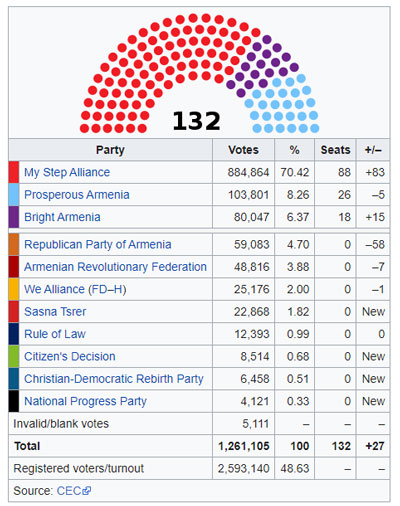
Armenia has been a representative parliamentary democratic republic since the Velvet Revolution in April 2018. The President, Armen Sargsyan, is the head of state executing mainly representative functions. The Prime Minister, Nikol Pashinyan (the leader of the Velvet Revolution), is the head of the government performing executive power. The National Assembly of Armenia holds the legislative power.
Religion
Armenia is the first country in the world to officially adopt Christianity as a state religion in 301 AD. Its roots go back to the 1st century AD, founded by two apostles, Thaddaeus and Bartholomew. The Armenian Apostolic Church (also referred to as the Armenian Orthodox Church or the Gregorian Church) has been crucial in preserving Armenian culture and traditions for centuries.
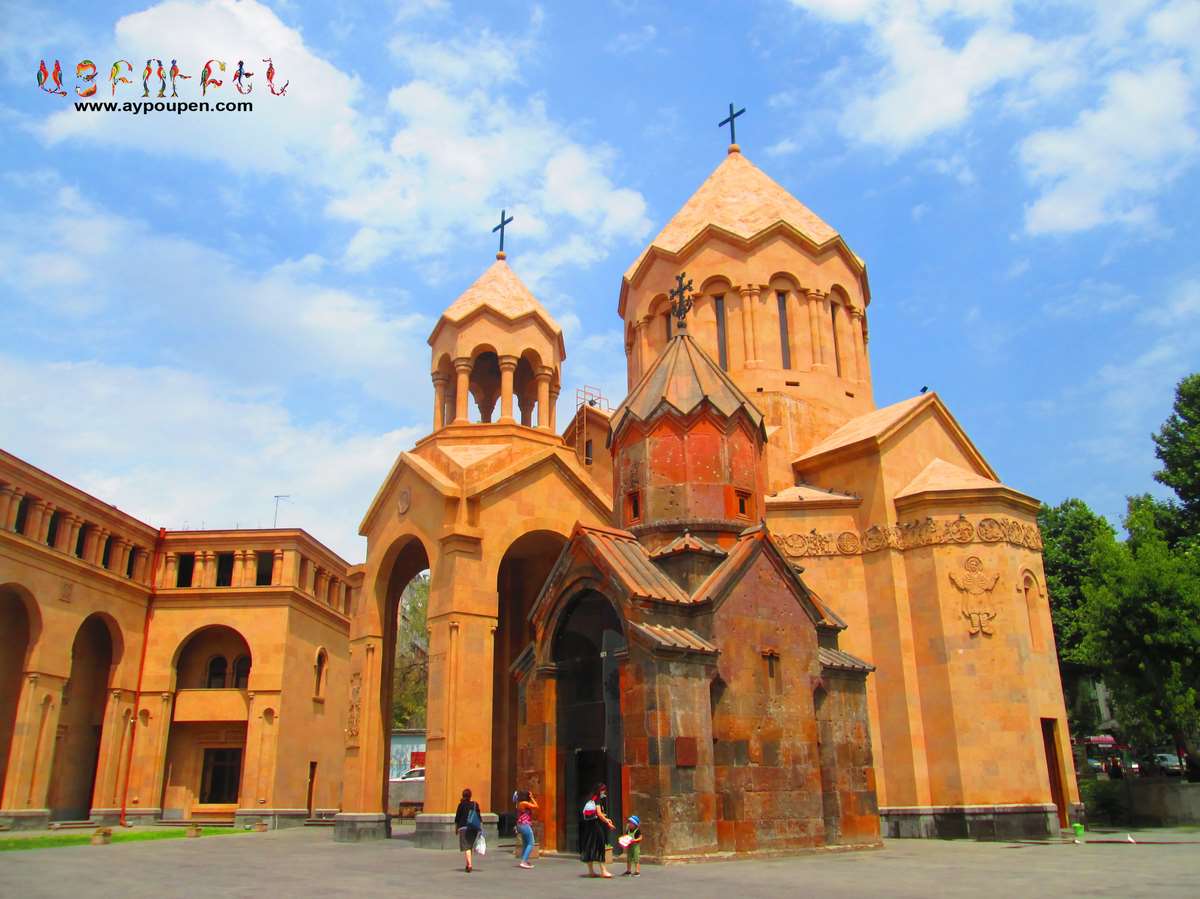
The Spiritual Center of the Armenian Apostolic Church is Etchmiadzin Cathedral, claimed by many scholars to be the first cathedral built in ancient Armenia and is often believed to be the oldest cathedral in the world.
According to a legend, Armenia’s patron Saint Gregory the Illuminator, had a vision of Christ descending the Earth and striking it with a golden hammer, which he believed was the place where the cathedral should be built. The patriarch named the cathedral Etchmiadzin meaning “The Descent of the Only-Begotten”.
From Paganism to Christianity
Before Christianity, the main religion in Armenia was Armenian paganism, until 301 AD when the St. Gregory the Illuminator converted the “pagan mind” of the king of Armenia Tiridates the Great.
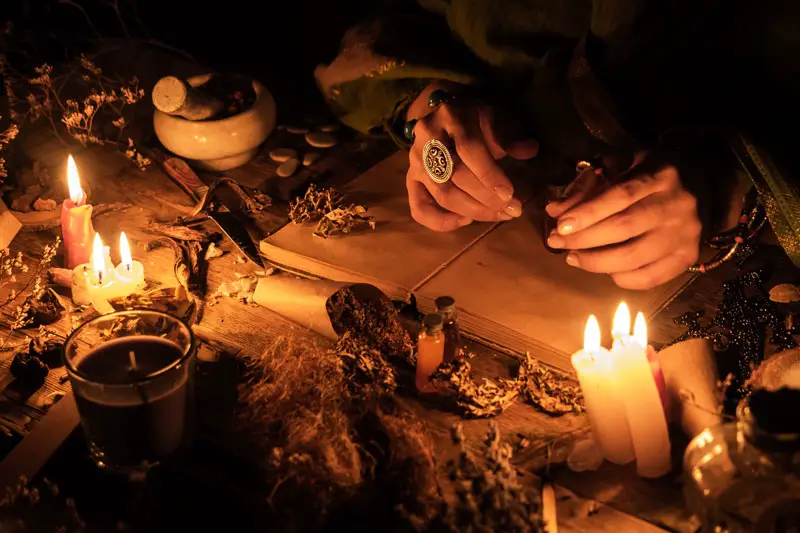
Born in Cappadocia, Gregory attended a Greek Christian school. Gregory’s father, Parthian noble Anak the Parthian, took part in the assassination of Armenian King Khosrov I. According to the famous Armenian Historian Agatangelos, Gregory felt guilty for his father’s sins.
While in Armenia, he earned his position at the court of the Armenian King Tiridates the Great as a palace functionary. Once, at one of the pagan ceremonies, the king ordered him to put a flower wreath at the statue of the Goddess Anahit, but Gregory’s Christian beliefs were against the king’s will.
Soon after learning Gregory’s the son of the killer, he had Gregory tortured and imprisoned in the Khor Virap (pit of oblivion) prison, known as the place where nobody ever returned from. After 13 years of imprisonment, Khosrovidukht, the king’s sister, was ordered to retrieve him.
Troubled by the king’s terrible illness (lycanthropy) at that time, she had a vision that Gregory was alive and the only one who could heal his brother. Accordingly, Gregory got out and managed to cure the king and convert him to Christianity.
With the new Christian religion, Gregory soon became the first bishop of Armenia. Numerous churches and monasteries sprang up at the places of the newly-wiped out pagan temples, and the new era of the history of Armenia began.
Wars: Sea to Sea Armenia
Modern Armenia encompasses only a small part of ancient Armenia, one of the world’s oldest centers of civilization. Historic Armenia reached its height under King Tigran the Great when Armenia stretched from the south-central Black Sea coast to the Caspian Sea and from the Mediterranean Sea to Lake Urmia and was ten times more than the current size of today’s Armenia. Armenia was usually described as “Sea to sea Armenia” referring to the kingdom of Tigranes.

By the 14 century CE, the Kingdom of Armenia was gradually losing its strength with time as it was subjected to frequent foreign incursions exposing the very existence of the Armenians. Under the century-long rule of the Ottoman and Persian empires, Great Armenia was not the same anymore.
In the 19th century, Russia occupied Eastern Armenia. Meanwhile, Western Armenia was left under Ottoman rule, followed by the systematic massacres of Armenians from 1894-1896 and 1915.
Armenia declared its independence on May 28, 1918, which didn’t last long. In 1920, Turks and Soviet Russia invaded Armenia, establishing the Soviet Republic of Armenia in November of the same year. The Soviet rule gave a period of relative stability to Armenians. Finally, in the 20th century, Armenia declared its independence once again on September 23, 1991, as the Republic of Armenia.
Geopolitics of Armenia
If we look back on Armenia’s history, we will notice that Armenia was reigned by each of its powerful neighbors, including Turkey, Russia, and Iran. Since Soviet times, Russia has remained its most significant and influential power and a key to its security.
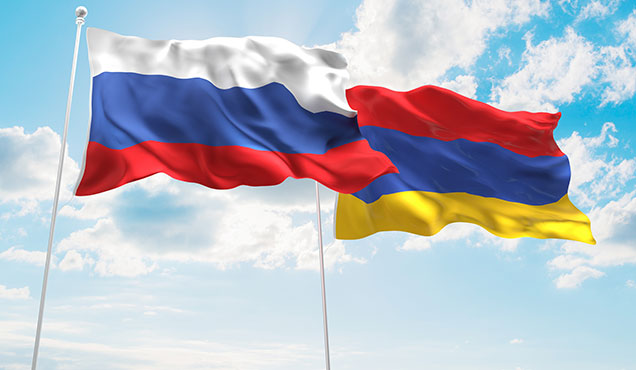
With the dissolution of the Soviet Union in 1989, tensions developed between Soviet Azerbaijan and Armenia over Nagorno-Karabakh, a historically Armenian region mostly populated by Armenians in Azerbaijan’s territory.
The tensions developed into war between Armenia and Azerbaijan from 1988 to 1994. Currently, the Nagorno-Karabakh region is de facto under Armenian control but still is a target for common attacks by Azerbaijan.
Economically, Armenia is isolated, depending solely on Russia for economic and military support, which does not always share his interest in Armenia. After all, among its complex neighborhood, Armenia’s geographic advantage remains an unquestionable force.
Artsakh (Nagorno-Karabakh) Second War.
Between 27 September and 9 November 2020, Azerbaijan and Armenia fought a war over the disputed Nagorno-Karabakh area. There was a combined death toll of more than 7,000 soldiers as Azerbaijan took control of territories it had lost in the 1990s to Armenia and the self-declared Republic of Nagorno-Karabakh (the Republic of Artsakh). The fighting ended with a Russian-brokered ceasefire, and Moscow deployed peacekeepers to the area, which will remain in place until 2025 and probably longer.
Weather in Armenia (Climate)
Traditionally described as “the Country of the Sun, ” Armenia has a highland continental, dry climate. Summers last from June to mid or even the end of September and are usually hot, sunny, and dry, accompanied by evening mountainous breezes. The temperature generally reaches 25-36°C and can climb up to 40°C in the Ararat valley, including the capital city of Yerevan.

Lake Sevan, historically called “Sea of Gegham” is a welcome summer escape for many Armenians. Sevan is the largest lake in the Caucasus region and the second-largest in the world, thanks to its altitude (1900 meters above sea level). Settled up in the Armenian Highlands, it’s surrounded by a peninsula where a medieval monastery stands.
Autumns are unique, vibrant, and colorful. Winters are cold with relative snow, and temperature can drop to -10 and more depending on the region. Spring is the shortest season. Tsakhkadzor is the most popular winter resort in the country and the favorite among sports enthusiasts.
Earthquake in Armenia
The whole territory of Armenia is located in a high seismic zone. Small earthquakes are quite common here.
1988 reminds the deep wound of Armenia’s history as the most powerful earthquake known as the Spitak Earthquake hit the city of Spitak and Gyumri with a surface wave magnitude of 6,8, followed by massive destruction. 50.000 lives were lost within just 20 minutes, and nearly half a million buildings were destroyed. The earthquake was felt as far away as Turkey, Iran, and Georgia. International support soon poured into Soviet Armenia’s nightmare, becoming the largest international cooperation since World War II.
Many international artists participated in music-related contributions to raise aid for Armenia, including world-renown Armenian-French singer Charles Aznavour, who gathered a group of French singers and TV presenters to record the charity single “Pour toi Arménie” (For You, Armenia), which sold more than 1 million copies and brought major support to the Armenian victims of the earthquake.
The Tri-color Flag of Armenia
The flag of the Republic of Armenia was officially adopted in 1990 by the Armenian Supreme Soviet. It consists of red, blue, and orange stripes derived from the flag of the Armenian Kingdom of Cilicia, the Lusignan dynasty.

According to the Constitution of Armenia, the red symbolizes the Armenian Highland, the struggle against foreign invasions, and the survival of the Armenian people, traditionally interpreted as the blood of 1,5 million Armenian victims of the Armenian Genocide.
The blue color symbolizes peace and hope, while orange, or as Armenians call it, apricot color (one of the symbolic fruits of Armenia), is meant to signify the talent and hard-working nature of Armenians.
Armenian Money & Currency
The national currency of Armenia is the dram (sign: ֏; code: AMD), and the neighboring Republic of Artsakh as well. The word “dram” translates as “money” and has Greek (drachma) and Arabic (dirham) roots. The first example of dram currency comes from 1199 to 1375, when silver coins called dram were used.

During the Soviet period, Armenia joined the ruble zone, which soon collapsed with the Soviet Union, and in 1993 Armenia introduced a new currency of dram. In 1994 the first series of aluminum coins were introduced and had been changed.
How Safe is Armenia?
Armenia has been recognized as one of the top 10 safest countries in the world (78,40%) in 2020. Crimes and robberies are not that common here. Concerning terrorism, there has been no history recorded until now, and I’m not kidding.

In Armenia, you feel safe and sound no matter where you go. Besides, there are uniformed police officers at almost every corner. In case you decide to roam the streets during the late evening, don’t be surprised if you see children playing outside till midnight without their parents. It’s pretty common here. Everyone is outside when the sun goes down, especially on hot summer nights.
The nightlife in Yerevan is something you don’t want to miss. It’s full of people trying out Armenian cuisine, some cold Armenian beer (we have plenty), good music in aesthetic cafes, unique pubs and bars, enjoying cool evening breeze in parks, and embracing what the city offers.
Armenians are famous for their desire to help people, especially if you’re a foreigner. If they catch your wondering and confused face, they will not hesitate to approach you and offer their assistance within seconds.
Even if they don’t speak English (common among the older generation), they will eventually find a way to help you out. Especially in rural areas, it’s common for tourists to face the inviting nature of the locals to their houses, warm hospitality, and possibly, even offer overnight for free.
What is Armenia Famous for?
It’s hard to say what Armenia is famous for as it has so much to offer: should I start from ancient history, centuries-old manuscripts, or millennia-old monasteries and churches, unearthly food and drinks?
1. Armenia has the Oldest Winery in the world
In 2011 an international team of archaeologists discovered the place of the oldest winery in the world in a cave near the Armenian village of Areni. The settlement and a late Chalcolithic/Early Bronze Age ritual site are believed to date 6100 years old.
Near the winery, the world’s oldest shoe was found (5500 years). Today Armenia has many producers of different kinds of wine with high-quality grapes spectacular for their blessed fertile valleys of Mt Ararat.
2. Armenia’s capital city Yerevan is older than Rome
Yerevan is one of the oldest continuously inhabited cities in the world. The city is 29 years older than Rome and was built in the 8th century BC by King Argishti I. Based on one of the theories, the name Yerevan derives from the Urartian military fortress of Erebuni founded in 782 BC by the same king at the Ararat plain.
Erebuni was a fully royal capital and was considered as a great administrative and religious centre. Over time, Armenian language was influenced by the Urartian one, and the name of the city of Erebuni eventually evolved: Erebuni-Erevani-Erevan-Yerevan.
It’s the 14th among the capitals and has been the capital of Armenia since 1918. Yerevan is frequently referred to as the “Pink City” due to its rosy volcanic rock called tuff excessively used in architecture over the years.
3. “ARARAT” Cognac was Churchill’s favorite and not only…
Armenian “ARARAT” cognac and brandy was the must-have drink for the conference tables of Joseph Stalin and Winston Churchill. In the Second World War, several dozen cases of Armenian brandy were shipped to Winston Churchill by the order of Stalin. The ex-British Prime minister once mentioned that he had drunk enough brandy to fill three railway carriages by his 71 years of age.
“Ararat” cognac has become a special souvenir for those who want to take the taste of Armenia with them in a bottle although the famous brandy can be obtained at any corner of the globe.
4. UNESCO World Heritage sites
Armenia is like an open museum of monasteries and churches, some of which are included in the UNESCO World Heritage list: the monasteries of Haghpat and Sanahin; the cathedral and churches of Echmiadzin, the archaeological site of Zvartnots; and the monastery of Geghard and the Upper Azat Valley.
5. The Longest Ropeway In the world
Armenia has the world’s longest non-stop double track cable car- The Tatev Aerial Tramway with 5752 m long (the ropeway is mentioned in Guinness World Records).
The ropeway offers a 12 minute-magnificent ride with spectacular views of 320 m above the scenic gorge of the River Vorotan finishing the stunning creation of medieval Armenian architecture, Tatev monastery built in the 9th-13th centuries.
6. Armenia’s “Carahunge” is older than Stonehenge
Go on, shout out to the world. Armenian Carahunge is 2500 years older than the British Stonehenge.
About 200 km from Yerevan, in the Syunik region you will find a prehistoric archeological site called Carahunge often referred to as the “Armenian Stonehenge”.
Located on a plateau at an altitude of 1,770m, it encompasses 200 stones with 5cm holes for each. The construction still remains a mystery to many scientists. According to some, it used to be an observatory for early star studies and dates back to the 6th century BC.
The name Carahunge derives from the Armenian words car-stone, and hunge-sound, thus meaning “speaking stones”. This is due to the fact that the stones make whistling sounds on a windy day, probably because of the numerous holes on the stones and their location from different angles. This megalithic site was officially named the Carahunge Observatory in 2004.
7. Chess is mandatory at schools
The culture of Chess in Armenia has been around since the early Middle Ages, which was standardized in the Soviet times mostly thanks to the Armenian grandmaster Tigran Petrosyan who earned his title as the World Chess Champion.
Armenia is famous for having the most chess grandmasters than any other country. What is even more compelling is that today chess is a must-have subject in all Armenian schools, making Armenia the first country ever to make Chess mandatory at schools.
8. Armenian bread “Lavash” is UNESCO-listed
Bread is an inextricable part of the Armenian culture and history. We simply cannot live without bread, especially lavash (e.g. eating Armenian barbeque without lavash would be a nightmare for Armenians). It symbolizes health, prosperity, luck and abundance.
Lavash is a soft, thin flatbread made of flour, salt, and water and traditionally baked in tonir (un underground earth oven). It’s common to the cuisines of the Caucasus and Western Asia.
Lavash not only has a mouthwatering taste but also is easy to keep. If precisely stored, it can be kept up to 1 year. The cornerstone of Armenian cuisine, lavash was included in UNESCO’s list of Intangible Cultural Heritage in 2014.

